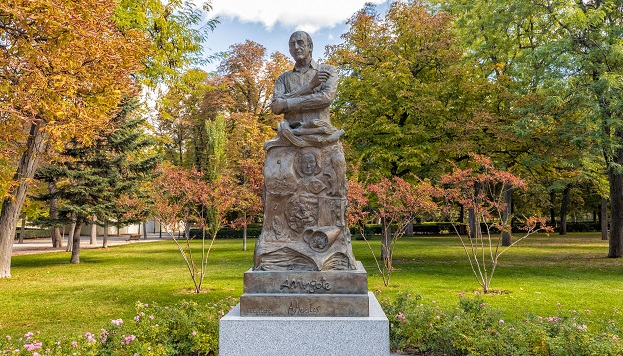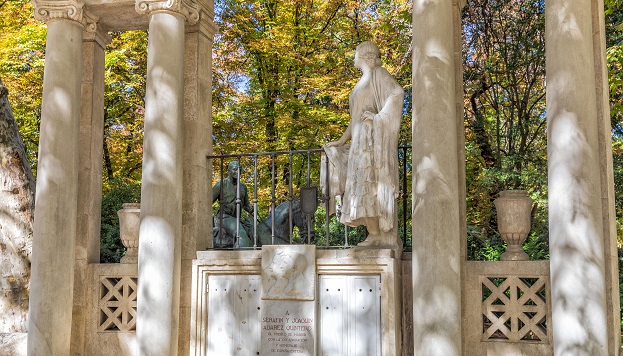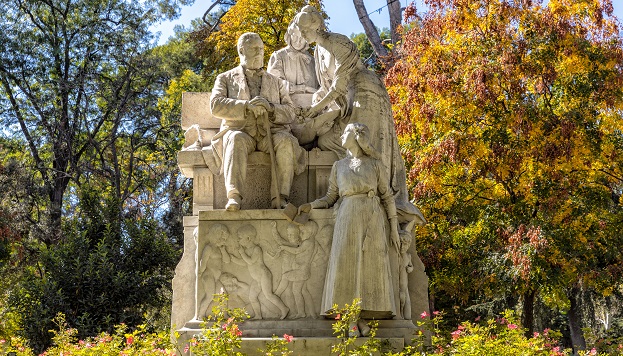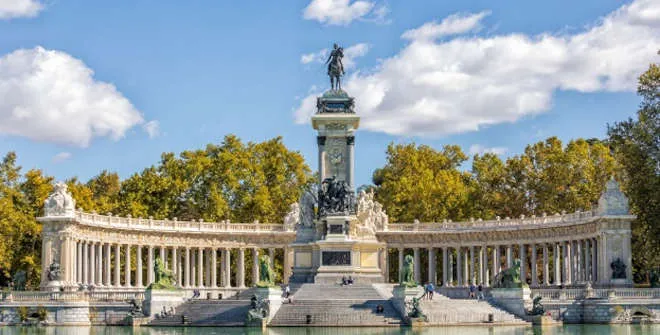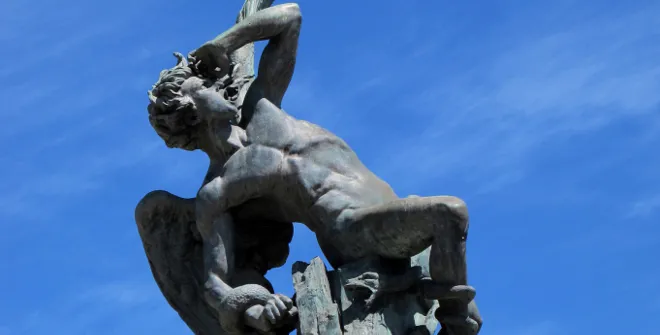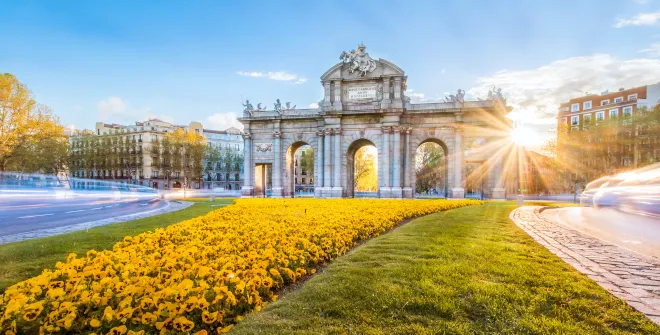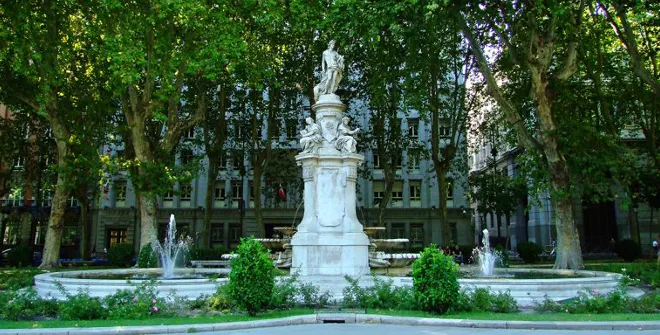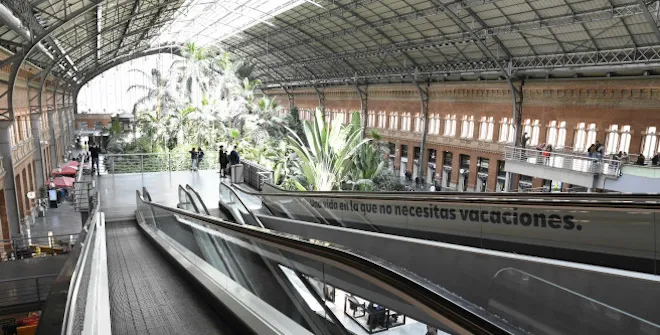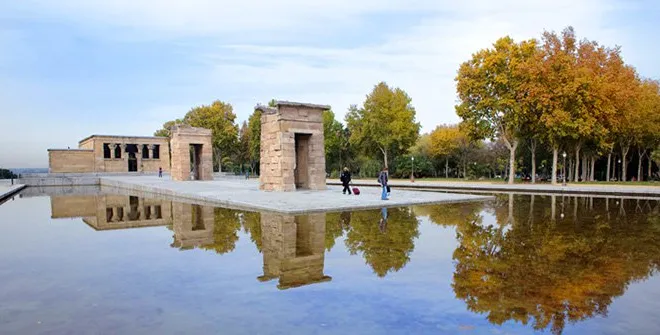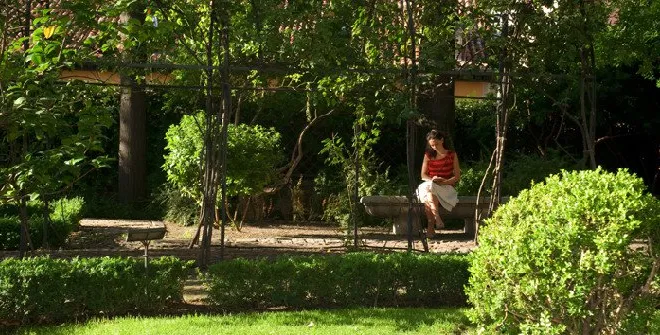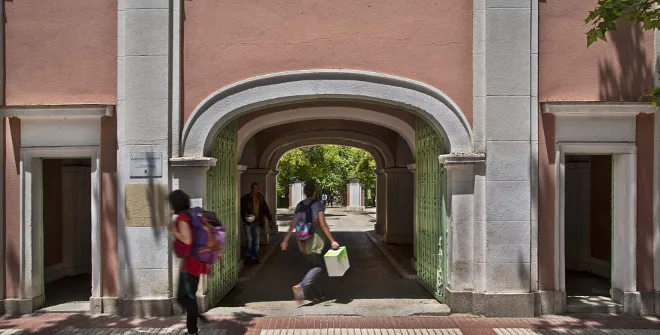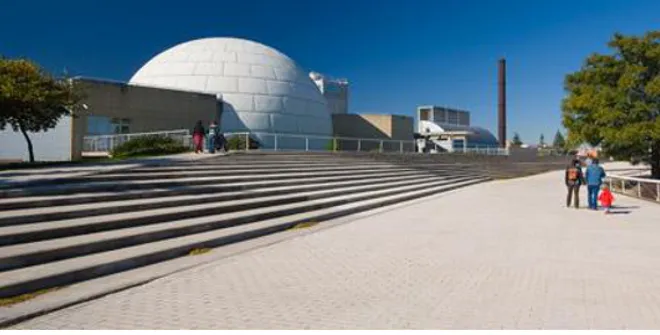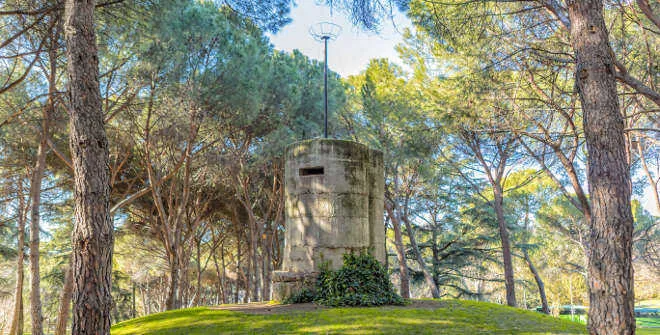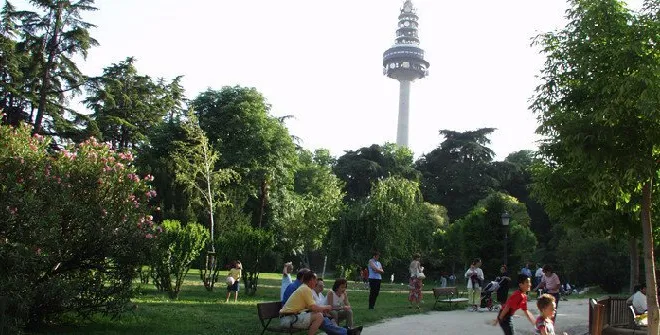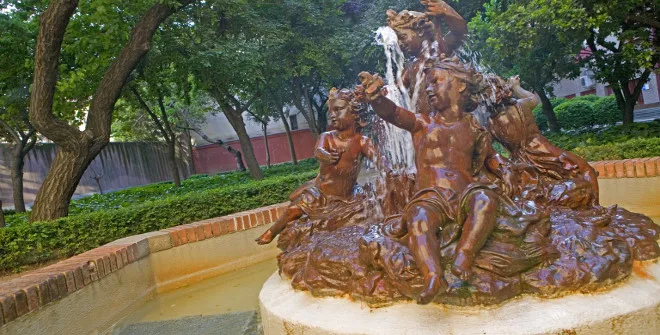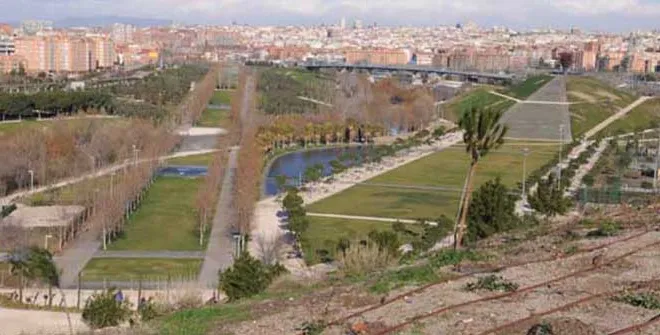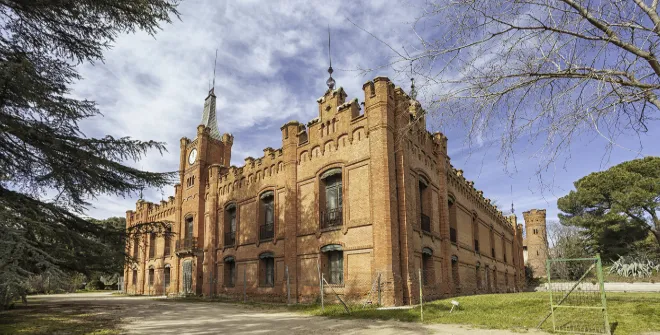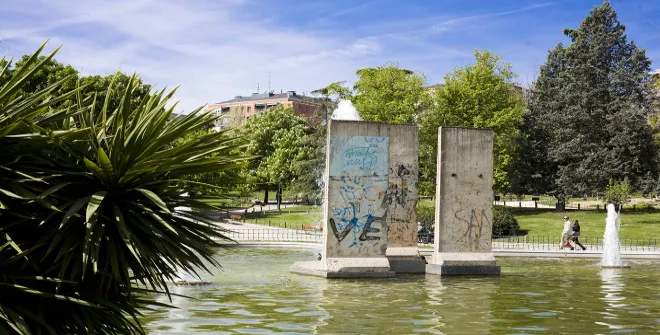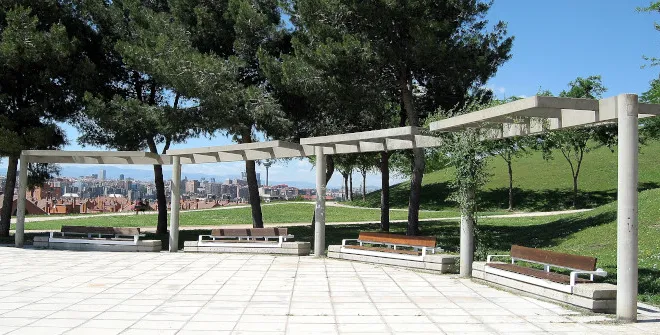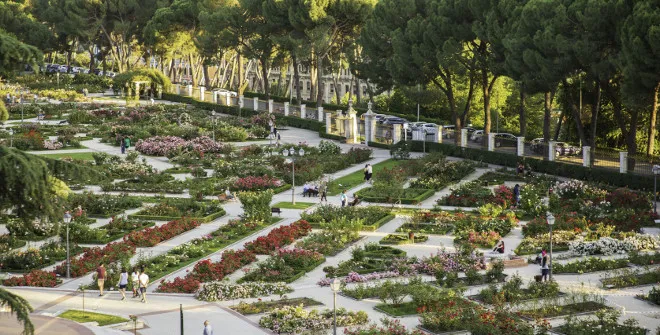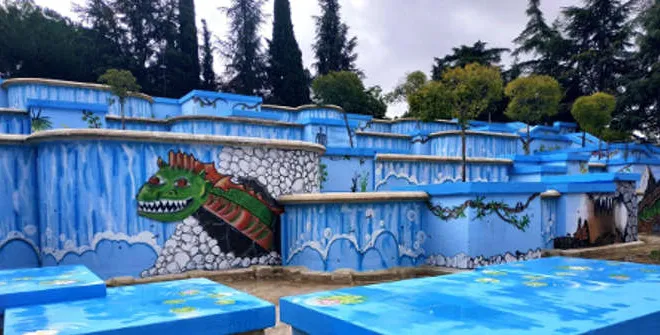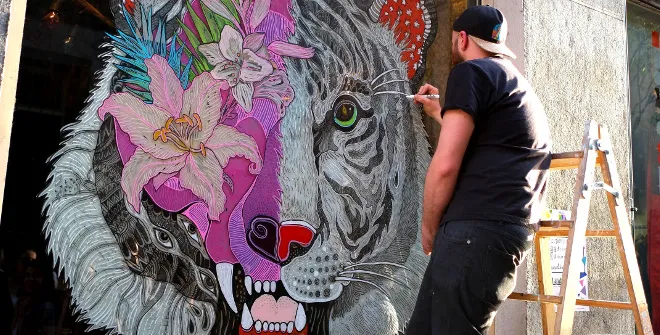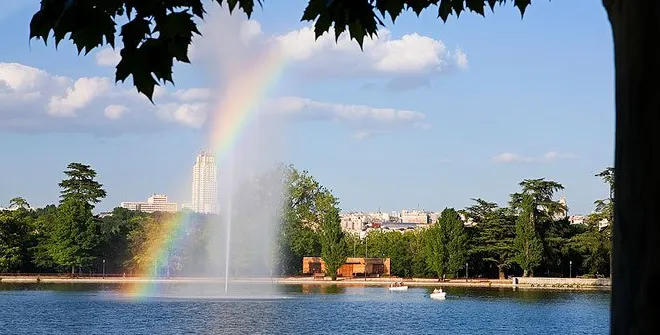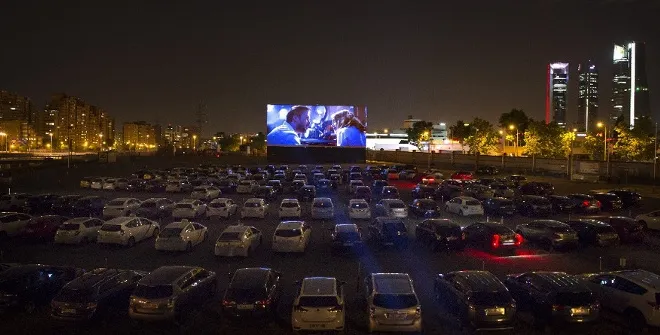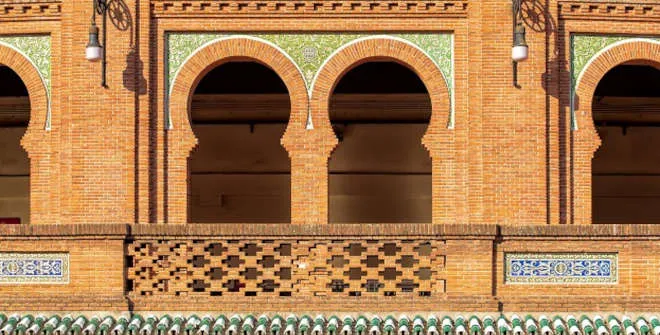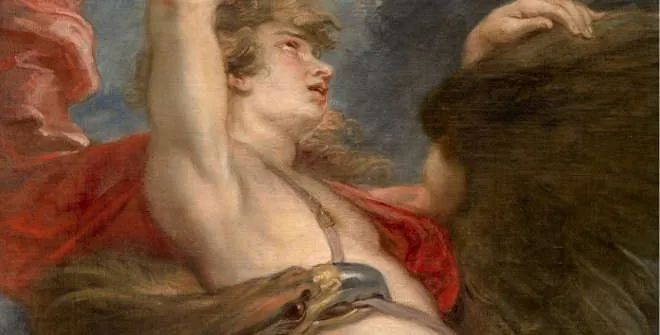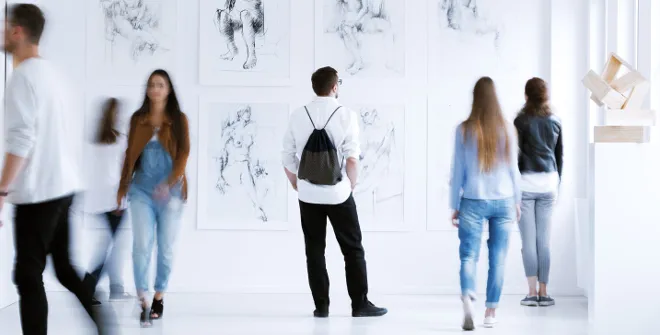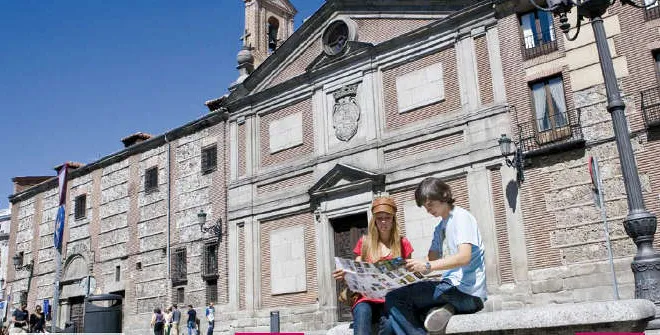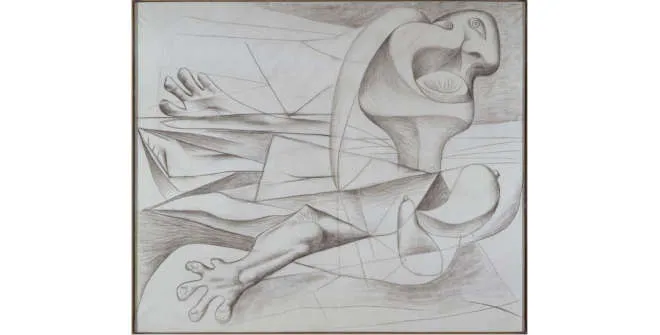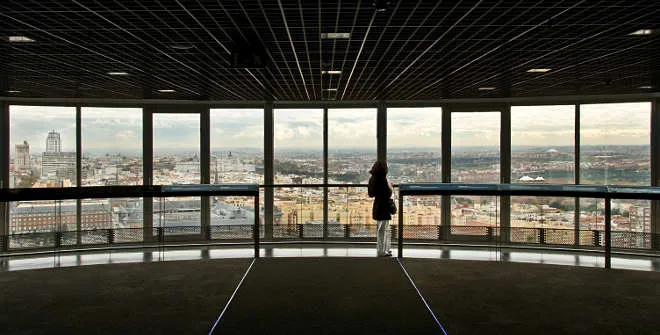A Forest of Sculptures
In El Retiro Park, the former garden of the palace of the same name, it’s as easy to lose yourself among all the groves of trees as it is to do so while you’re searching for the monument to your favourite intellectual, artist, hero, god, devil or idea. Not all the statues that adorn the park are as valuable as the ones found in the nearby Prado or Reina Sofía museums but many of the ones included here would certainly not be out of place in either. Our itinerary begins at the Puerta de Madrid gate, which faces Calle de O'Donnell, and, going clockwise, heads south down the Paseo de Coches (Paseo de Fernán Núñez) as far as the Fountain of the Fallen Angel, and from there it turns to the north again to pass through the Parterre and the Retiro Park Lake. By Ignacio Vleming.
As soon as we enter, we see four columns on the pavement to the right dedicated to Maestro Chapí, composer of such zarzuelas as The Troublemaker (La Revoltosa). Although the sculpture on display today is a replica of the original from 1921, the work of Julio Antonio, we can nevertheless appreciate a number of features that are characteristic of the fin-de-siècle style, such as the combination of various materials - in this case granite and bronze - and of the rough or semi-rough surfaces that give way to other more polished ones. This produces an effect similar to that of including in-focus and out-of-focus areas within the same photographic frame. There is no lack of detail in the Allegory of Music: crowned by a peineta ornamental comb, in her hands she holds a small Victory of Samothrace, the emblem of classicism.

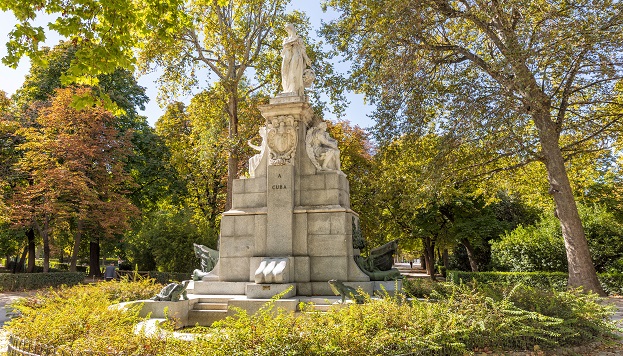
A little further on, if we peer through the foliage to the right, we will discern a massive stone monument dedicated to the Republic of Cuba. Although it was inaugurated in 1952, many of its elements had in fact been sculpted twenty years earlier. It constitutes a veritable synthesis of Spanish sculpture from the first half of the 20th century.
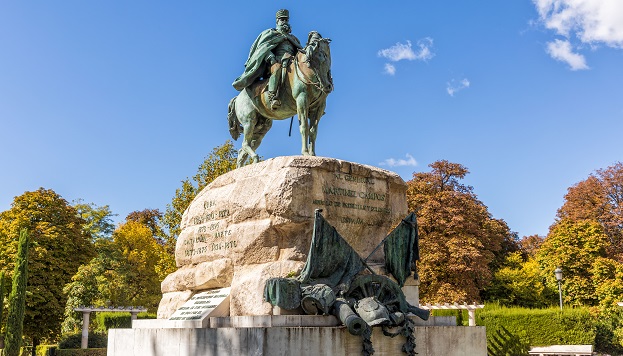
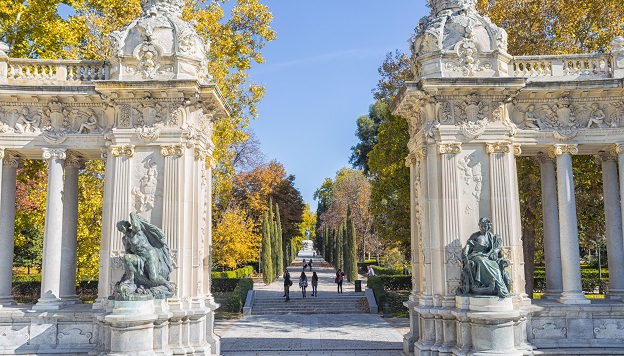
We continue walking along the Paseo de Coches to the steps that lead to the square presided over by the equestrian sculpture of General Martínez Campos, one of the most spectacular monuments in El Retiro Park. Far removed from the idealism of myriad classical models that extol politicians and soldiers, the man who masterminded the Bourbon restoration is portrayed here as the epitome of epic effort and fatigue, astride a horse whose head, unlike those ridden by warlords and emperors, is bowed in a gesture of exhaustion. Considered one of Mariano Benlliure’s finest works, it fully embodies the Realist style.
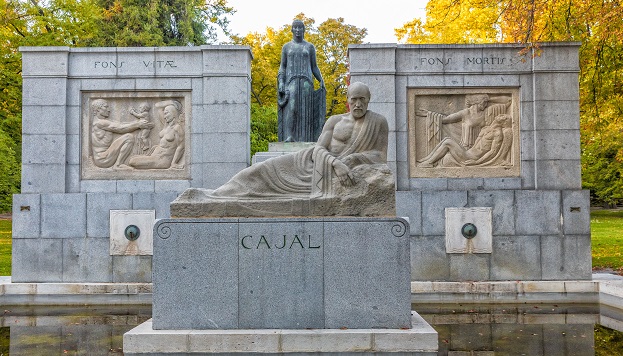
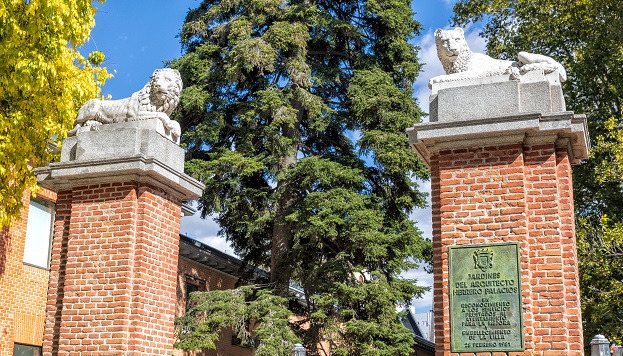
If we continue south, just beside the terrace at the junction of the Paseo de Coches and the Paseo de Venezuela - the one that leads to the lake and The Artichoke Fountain–, we come face to face with the monument to the Nobel Prize winner Santiago Ramón y Cajal. In 1922, the sculptor Victorio Macho won the tender organised by the Academy of Medicine to render tribute to the scientist on the seventieth anniversary of his birth.
The Spanish physician, the father of neuroscience, is shown reclining as if he were a rather wistful Greek philosopher at a banquet to which, we imagine, other great intellectuals of the Spanish Silver Age may well have been invited, such as his fellow Nobel laureates José Echegaray, Juan Ramón Jiménez, Vicente Aleixandre, Severo Ochoa and Jacinto Benavente. By the way, the latter has his own monument by Victorio Macho in El Retiro Park, but we’ll come to that in due course.

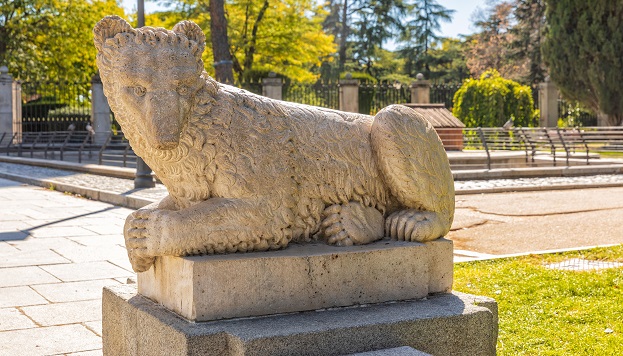
The two oldest sculptures in El Retiro Park date back to 1650 and are located at the beginning and end of the straight stretch of the Paseo de Coches, which for more than a hundred years was an estuary along which the king’s pleasure boats sailed.
Both allude to the Labours of Hercules, the hero to whom the Habsburgs attributed the origin of their lineage. The Lion of Nemea stands in the vicinity of the Eugenio Trías Library, not far from another sculpture of a lion that once indicated the location of the Menagerie in the 19th century. And the Hydra of Lerna is on the central island of the avenue, just before the Rose Garden. Killing the lion and the hydra are the first of the twelve trials Hercules had to undergo as penance for having taken the lives, in a fit of madness, of his own wife, his children and two of his nephews.
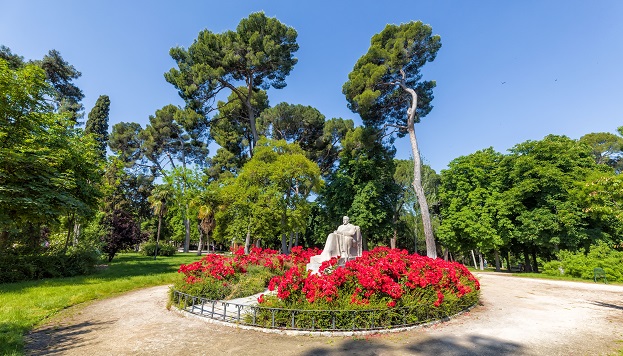

As is the case with the monument to Ramón y Cajal, the monument to Benito Pérez Galdós is also the work of Victorio Macho. It is located behind a terrace on the Paseo de Uruguay, opposite the Rose Garden. Unlike the scientist, reclining and clad in a tunic as in days gone by, the writer appears seated in his armchair with his legs covered by a blanket, as he can be seen in some photographs of the period, when he was already quite elderly. Shortly before he died, the author of Fortunata and Jacinta attended the inauguration of this sculpture which was paid for by popular subscription. Sculpted in the Naturalist style, it is one of Madrid’s most valuable works of public art.
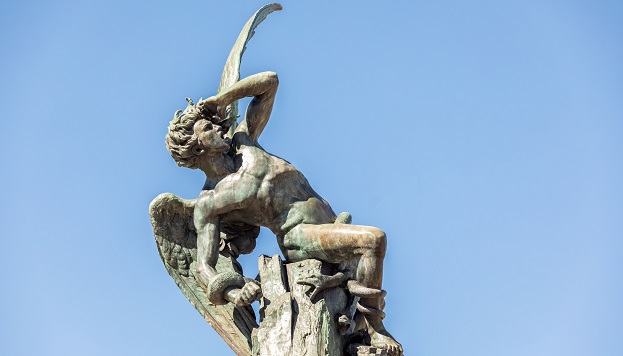
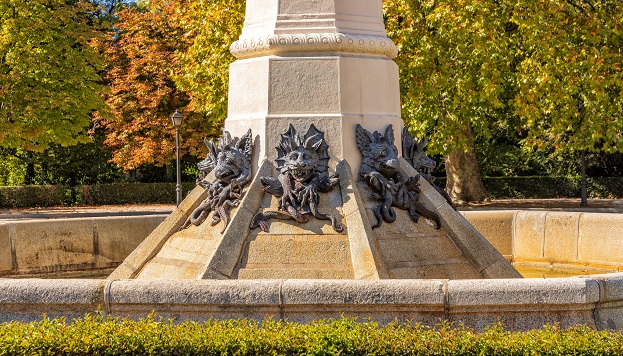
Much better known than that of Galdós however, is the statue of The Fallen Angel, the work of the sculptor from Madrid Ricardo Bellver. It is considered by certain travel guides to be the only monument to the devil anywhere in the world - many also hasten to add that it stands exactly 666 metres above sea level!
This sculpture, which shows Lucifer at the moment of his expulsion to Hell, earned the artist the medal of the National Exhibition of 1878. That same year it was shown at the Universal Exhibition in Paris and in 1879 the National Museum (now the Prado Museum) gifted it to the City of Madrid.
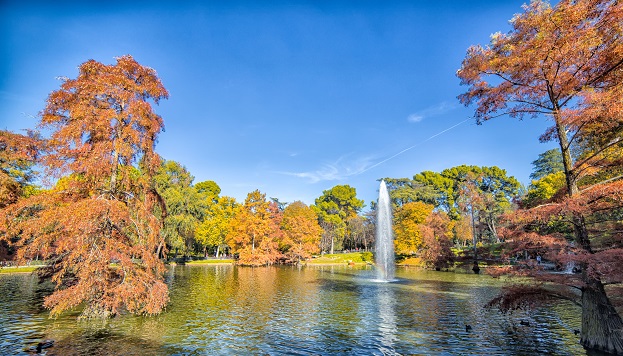
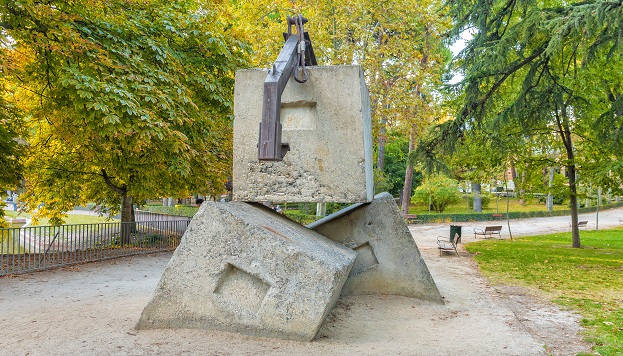
If we venture into what is known as the Campo Grande - the area around the Glass Palace that today occupies the centre of El Retiro Park - we will come across two sculptures by two extremely high-profile artists. The bust by Ignacio Pinazo of the forestry engineer Ricardo Codorniú, known as the “Tree Apostle” for his tireless defence of reforestation, is in fact quite modest. Equally discreet are the concrete dice that the Basque sculptor Agustín Ibarrola placed on the other side of the small pond - one of the few examples of contemporary art in the park.
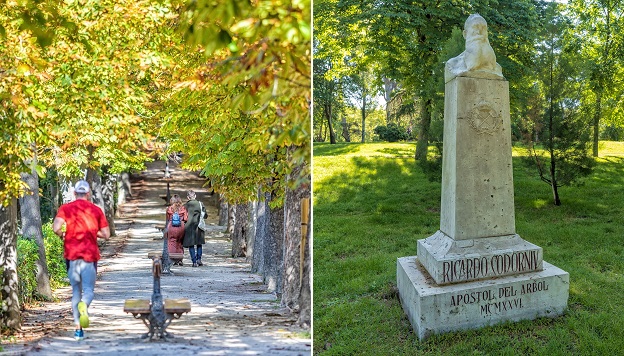

Our stroll continues clockwise, but this time we will be walking along the opposite side of the Retiro, the one closest to the historic centre of the city and Calle Alfonso XII. Our next stop is the Parterre, the only gardens whose original 17th-century layout has been preserved intact. The third of the sculptures by Victorio Macho that we are going to see today stands on the axis of this wide esplanade: the monument to the playwright Jacinto Benavente. A work that the artist made in the last chapter of his career, albeit based on a project dating from 1935.
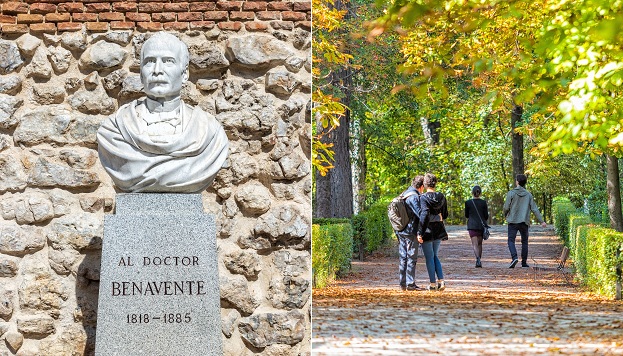
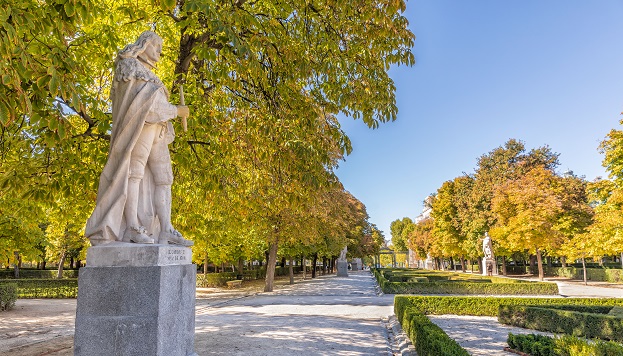
Further on, the Paseo de las Estatuas, which owes its name to the sculptures of the kings that flank it, cuts across El Retiro Park from east to west. Like those in the Plaza de Oriente, these figures were made to decorate the cornice of the Royal Palace, but after Queen Isabella Farnese dreamt that they collapsed and killed passers-by, they were removed from their original location and later placed in different public spaces. That is why they are works intended to be contemplated from a certain distance, with rather large heads and a rudimentary finish.
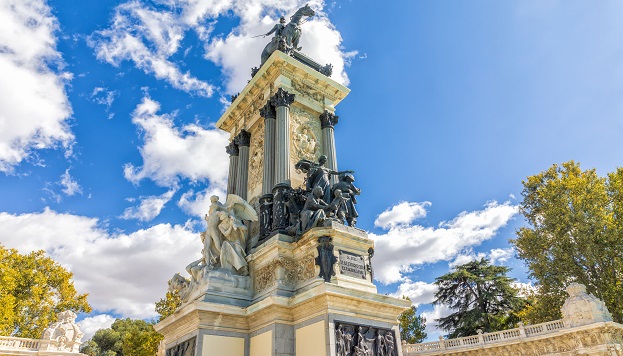

And by way of the Paseo de las Estatuas we reach the Great Lake of El Retiro Park. The city’s largest sculptural ensemble stands on its banks. Designed by the architect José Grases Riera, no fewer than 24 artists worked on the Monument to Alfonso XII. And last but not least, the slender pedestal - which also serves as a viewpoint - is crowned by the equestrian figure of the king himself, the work of Mariano Benlliure. At the entrance to the colonnade, the gigantic scale of the Allegory of the Navy by the sculpture from Cordoba, Mateo Inurria, is indeed remarkable. Thanks to Ignacio Zuloaga, Inurria had met Rodin when he visited Spain in 1905.
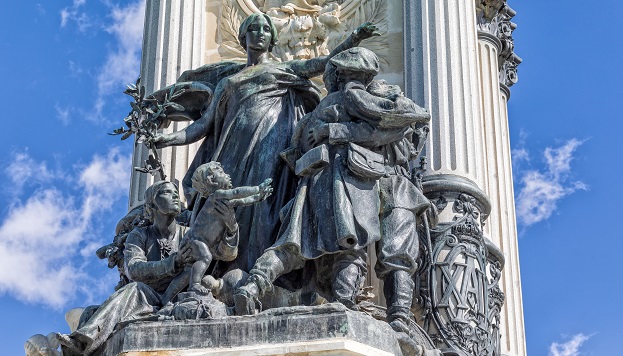
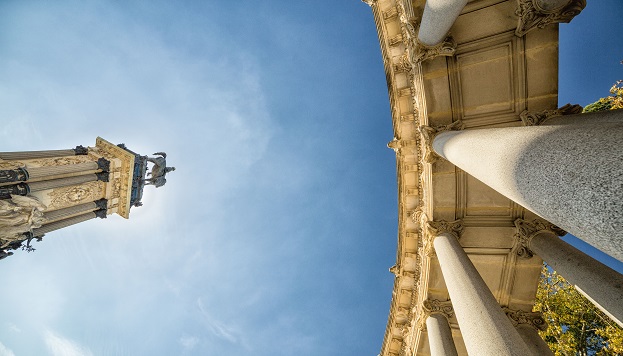
There are still so many other sculptures in El Retiro Park that we haven't mentioned! One of the most endearing is the statue of Mingote, very close to the Metro station that he himself decorated. The City Council commissioned Alicia Huertas to create this work in 2014 as a tribute to the cartoonist. And just beside the Casa de Vacas Cultural Centre is the monument by Lorenzo Coullaut Valera to the Álvarez Quintero Brothers, masters of rather bawdy one-act lyrical plays known as sainetes to whom the most kitsch group of statues in the entire city is dedicated: it depicts a courtship scene in the most stereotyped Spanish cañí style. The same artist is responsible for a group portrait in stone dedicated to Ramón de Campoamor, in which a young woman approaches the poet with one of his books in her hand. This brings us back to the Puerta de Madrid Gate, the starting point of this route. How about losing ourselves once again in the forest of sculptures in El Retiro Park?
